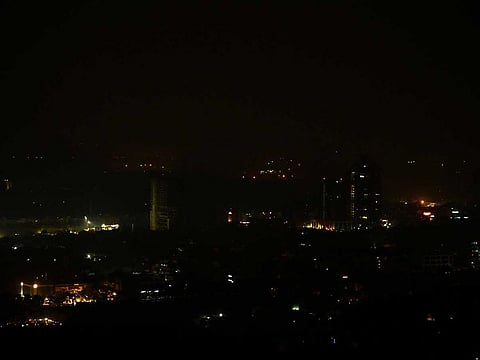Pakistan power outage could have been prevented
Country experienced a national blackout after a drop in frequency in transmission system

“Darkness all across the land...midnight hour is close at hand”. Michael Jackson’s Thriller? Yes, but also a two-line summary of what Pakistan experienced over the weekend.
A few minutes before the clock struck 12, the whole country plunged into blanket darkness. From atomic plants to common households everything had a supply breakdown the likes of which the country has not seen in many, many years.
As is the wont in all such circumstances, the social media went wild with speculation. Some wrote it was sabotage; others feared attack by the country’s mortal enemies. A few tried to mollify heightened anxieties by saying this was “annual maintenance” — words that did not cut much ice with an exceedingly sceptical population that had no convincing explanation available from official quarters.
It took hours before word went out that the whole system had tripped. There weren’t many details available when as the rumour mills worked overtime. The night was spent in utter suspense before slowly the electricity supply started to come back. However, nationwide complaints of intermittent transmission remained even in the following days.
A very fraught situation
For a country that puts its emergency preparedness on top of national agenda, the situation was fraught. National supply lines becoming dysfunctional and backup plans getting fried (or frozen) isn’t really a reassuring sign. Even generally a crisis like this that spreads in every nook and cranny in a manner of minutes does not earn the incumbents any PR points with the public.
So what really happened? Officials who leapt to their own defence held press conferences and tried to make it all sound “normal”.
“Things like these had happened almost eight times during the previous governments’ rule...we have improved the quality of transmission lines through out the system and that is why we did not have a crisis like this for the past two years...,” said Umar Ayub, the minister for energy whose first reaction was to release his picture that showed him and an adviser on information standing at the national grid station — doing exactly what is not known.
Perhaps the aim was to make the statement that everything was under control and there was nothing to worry. However, his honest admission about the causes of the blackout left much to be desired. “We don’t know the cause. We are still investigating”, he said in the same presser.
Archaic transmission lines?
Another official explanation is that the system could not take the burden of the electricity supply moving through archaic lines, so it tripped.
If so, that would be truly worrying. Pakistan’s installed capacity is to the tune of 36,000 plus megawatts but on account of distribution problems not more than 26,000 megawatts gets utilised. But that is for the peak season — summers. In the winters typically the demand drops to around 10,000 megawatts that the system — in spite of its chronic problems — should have handled.
A more professionally insightful explanation comes from the experts. One of them, who has been associated with managing the national grids, believes that this was a pure management failure. According to him, after a terrorist attack in 2015, special measures were put in place to ensure that Pakistan’s distribution networks could fall back on local supplies to keep running even when there was a national challenge posed to the national network.
“Our production is stretched between north and south while our consumption is located mostly in areas that geographically form the centre of the country. This stretches supply lines, creates structural vulnerabilities. In 2016 we put in place SOPs that ensured that regional and local grids had enough electricity available to run on their own steam in case the national grid temporarily stops,” he said, citing personal reasons for staying anonymous.
Upkeep and maintenance required
Apparently, the upkeep and maintenance required for keeping the SOPs efficacious was not done and that’s what caused the collapse at a crunch time.
Experts who appeared on national media had more to add to similar possibilities. One of them put it down to the closure of hydro-based electricity producing units and those that are inoperative because of the ongoing shortage of gas caused by controversy related to import of LNG.
“There was no electricity available regionally and therefore even the diminished demand in the winter season was too much for the system”, said one of them.
These are disheartening assessments because they speak of a crisis that was purely preventable and had little to do with “unforeseen factors”. All of supply-side readings are documented daily and there is no dearth of the data that could have easily prepared us to pre-empt and prevent a national breakdown from happening.
That did not happen and resultantly nearly two days of intense speculation filled the air. The usual reaction — sacking of low-level functionaries and another inquiry — are pro forma actions. The fault, clearly, wasn’t in the statistics that were pointing to a deteriorating situation, but our inability to put corrective and timely measures in place.
Syed Talat Hussain is a prominent Pakistani journalist and writer. Twitter: @TalatHussain1
Sign up for the Daily Briefing
Get the latest news and updates straight to your inbox







